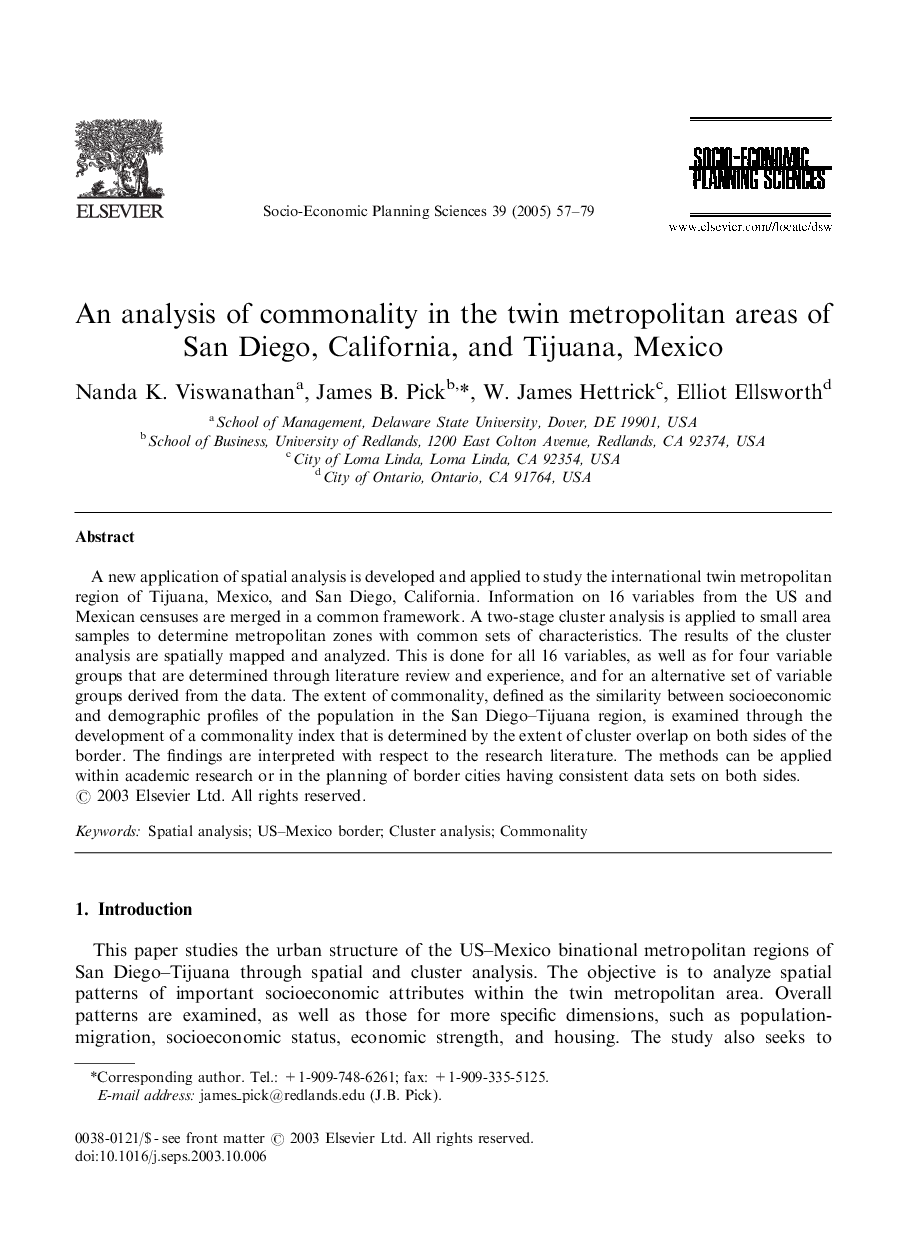| Article ID | Journal | Published Year | Pages | File Type |
|---|---|---|---|---|
| 10484157 | Socio-Economic Planning Sciences | 2005 | 23 Pages |
Abstract
A new application of spatial analysis is developed and applied to study the international twin metropolitan region of Tijuana, Mexico, and San Diego, California. Information on 16 variables from the US and Mexican censuses are merged in a common framework. A two-stage cluster analysis is applied to small area samples to determine metropolitan zones with common sets of characteristics. The results of the cluster analysis are spatially mapped and analyzed. This is done for all 16 variables, as well as for four variable groups that are determined through literature review and experience, and for an alternative set of variable groups derived from the data. The extent of commonality, defined as the similarity between socioeconomic and demographic profiles of the population in the San Diego-Tijuana region, is examined through the development of a commonality index that is determined by the extent of cluster overlap on both sides of the border. The findings are interpreted with respect to the research literature. The methods can be applied within academic research or in the planning of border cities having consistent data sets on both sides.
Related Topics
Social Sciences and Humanities
Business, Management and Accounting
Strategy and Management
Authors
Nanda K. Viswanathan, James B. Pick, W. James Hettrick, Elliot Ellsworth,
